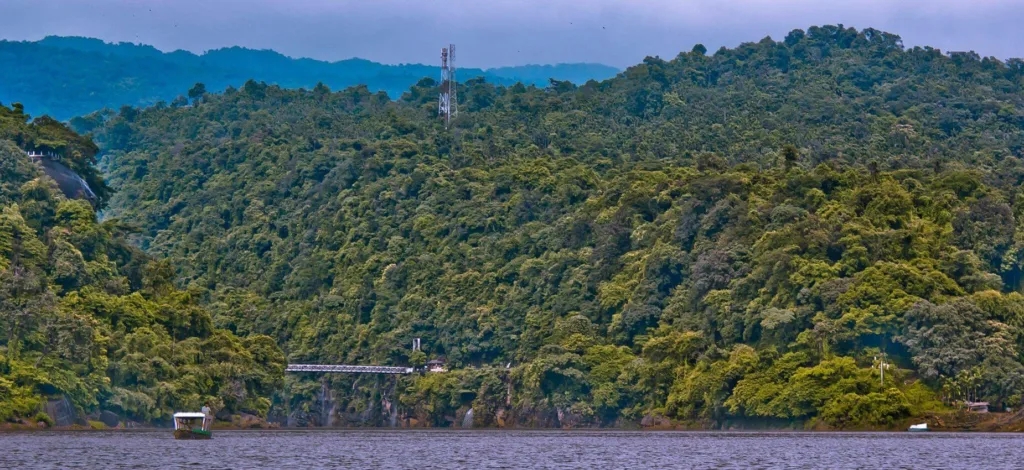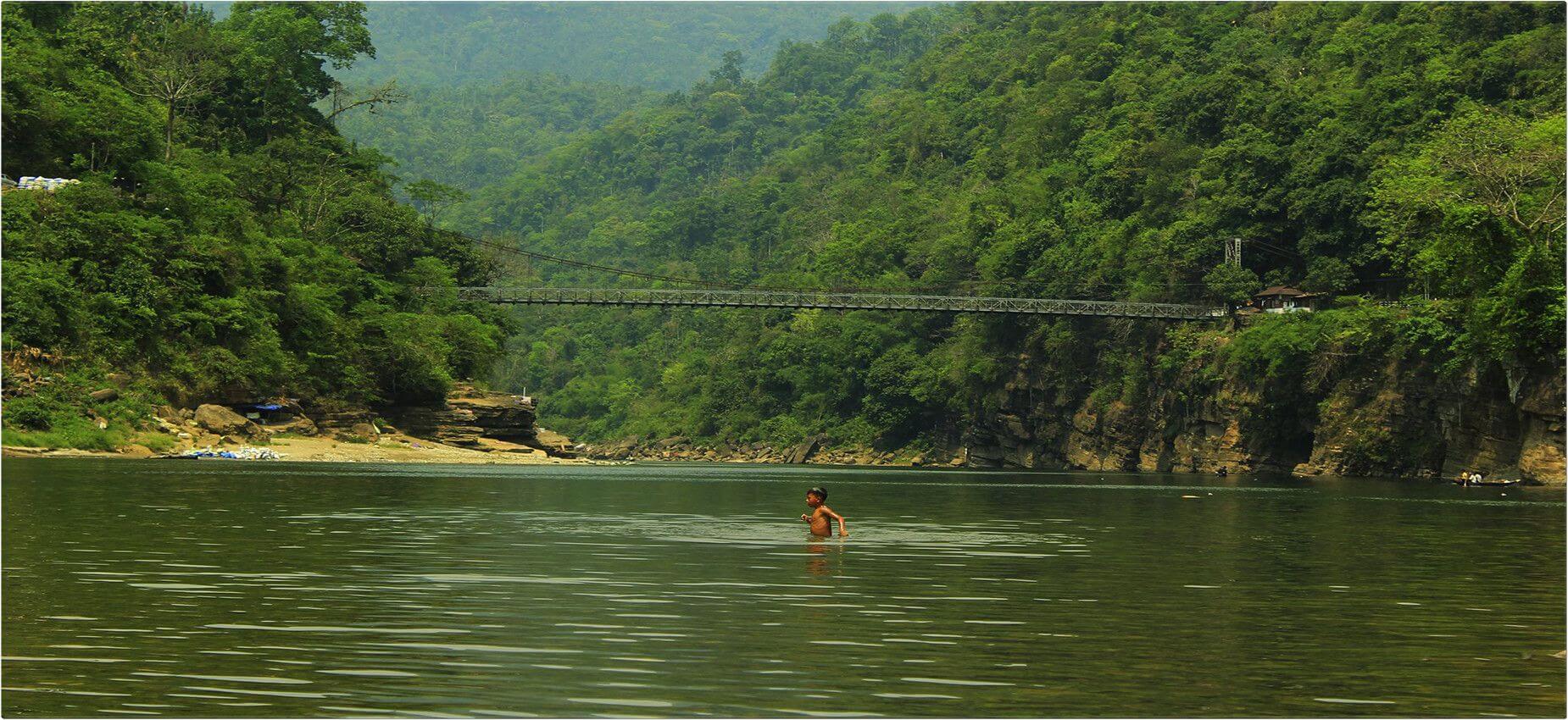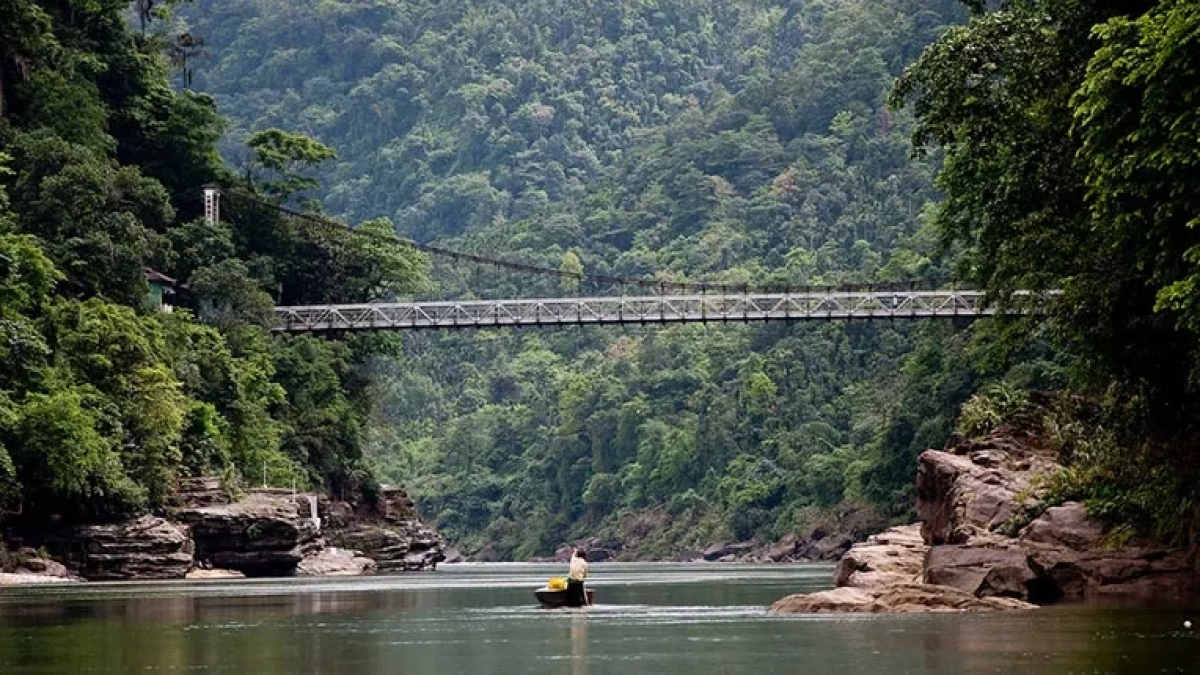Tucked away in the northeastern corner of Bangladesh, Jaflong is a hidden paradise that captures the hearts of nature lovers, adventure seekers, and travelers craving a break from the hustle of city life. Known for its breathtaking scenery, crystal-clear rivers, and rich cultural tapestry, Jaflong has emerged as one of the most iconic tourist destinations in Sylhet. If you’ve been dreaming of hills, waterfalls, tea gardens, and tribal culture all in one place, this is where your journey should lead.
Contents
ToggleA Gem in the Sylhet Region
Jaflong is located in the Gowainghat Upazila of Sylhet district, right along the border with the Indian state of Meghalaya. This unique location gives the region its stunning topography, where the mountains of Meghalaya pour down their pure, cold streams into the plains of Bangladesh. The flowing Dawki River, also known as the Piyain River, brings with it transparent waters and smooth, colorful stones that have become part of Jaflong’s identity.
This blend of mountains, water, forest, and stone creates a landscape that feels almost magical — no wonder it’s often described as one of the most scenic travel destinations in Bangladesh.
Jaflong Tourism
Jaflong is one of the most attractive tourist destinations in the Sylhet Division. It’s a popular tourist spot in Bangladesh, and the ideal visit duration is 1-2 days.
Nestled at the foot of the Khasi-Jaintia Hills, this scenic locale offers an idyllic panorama of rolling stones, serene riverside views, and lush greenery. The Dawki River (also known as the Piyain River in Bangladesh) brings stone boulders downstream, making it famous for its stone collection activities. Locals and tourists flock here to observe the stone collection process and the simple lifestyle of the indigenous Khasi people, the area’s native inhabitants. Nearby tea gardens, subtropical mountains, and cascading waterfalls enhance Jaflong’s beauty, making it a perfect retreat for nature lovers and photographers.

The area’s natural setting is tranquil yet vibrant, with clear waters, unique flora and fauna, and the melodious chirping of migratory birds in the winter. Jaflong also serves as a gateway to the Dawki-Tamabil border crossing between Bangladesh and India. This crossing is known for its crystal-clear river, which flows from India into Bangladesh.
Beauty of Jaflong
Jaflong, located in Sylhet, Bangladesh, is renowned for its stunning natural beauty and is often referred to as the “daughter of nature.” The area’s main attractions include the Piain River, the Khasia Hills, and the Dauki border area. These features contribute to the area’s picturesque landscape. The area is known for its clear water, rolling stones, and lush greenery, making it a popular tourist destination. Let’s explore the beauty of Jaflong!

Take a closer look at the beautiful Jaflong Tourist Spot.
Jaflong Tourist Spot
- Jaflong Zero Point
- Piain River: The Piain River, with its crystal-clear water, is a major highlight. The riverbed is filled with various-sized stones, and its clear waters allow visitors to see the underwater stones.
- Khasia Hills: The surrounding Khasia hills are covered in dense forests and offer breathtaking views, especially when shrouded in mist or clouds.
- Dauki Bridge: The historic Dauki Bridge, a suspension bridge connecting Bangladesh and India, is another notable landmark.
- Waterfalls: Several waterfalls, including Mayabi Jhorna, cascade down the hills, adding to the area’s charm.
- Stone Collection: The riverbed is also a place where people collect stones for construction and other purposes, offering a glimpse into the local lifestyle.
Other Attractions
- Khasia Village: Visitors can experience the unique culture and lifestyle of the indigenous Khasia people who live in the area.
- Tea Gardens: Jaflong is also home to tea gardens, adding to the scenic beauty of the region.
Best Time to Visit
- While Jaflong is beautiful year-round, the winter season is considered the best time to visit for clear skies and comfortable weather.
- To witness the wild waterfalls in their full glory, it’s recommended to visit during or just after the monsoon season.
How to Get to Jaflong?
Take the road, train, or air from any place to Sylhet, then take local transportation to your destination. The distance from Sylhet to the district headquarters is only 56 km by road.
Travel from Sylhet: You can take a bus, microbus, or CNG-powered autorickshaw to Jaflong. The trip takes between one and one and a half hours. You can also go by bus, microbus, CNG autorickshaw, or Laguna. The bus fare to Jaflong is 60 taka per person. The microbus fare for round-trip travel is 3,000–3,500 taka.
Why You Should Travel to Jaflong
Whether you’re a first-time traveler or a seasoned explorer, traveling to Jaflong offers something for everyone. The area is peaceful and relatively untouched by commercial tourism, making it ideal for nature walks, photography, and soulful reflection. As you walk along the riverside or hike into the hills, you’ll find yourself surrounded by stunning natural beauty: hanging bridges, tribal homes, stone collection zones, and even waterfalls that descend from nearby cliffs.
The climate remains mild and inviting for most of the year, though winter and post-monsoon seasons are particularly popular for travel due to the clearer skies and livelier rivers.
The Mesmerizing Piyain River
One of the most iconic attractions in Jaflong is the Piyain River, famous for its astonishingly clear water. On sunny days, it’s possible to see all the way to the bottom, even several feet deep. The river’s stony bed adds to its beauty — boats appear to float in the air, making for surreal photo opportunities.
You can take a boat ride along the river, where you’ll glide over crystal-clear waters with views of India’s hills in the background. If you love photography or simply enjoy peaceful water scenes, this is an experience you won’t forget.
Stone Collection and the Lives Around It
One of the more unique and bittersweet aspects of Jaflong tourism is witnessing the traditional stone collection industry. Men and women are often seen collecting stones by hand from the riverbed, forming one of the primary sources of livelihood in the area. It’s a chance to understand the local economy and daily life while gaining a deeper appreciation of the region beyond its beauty.
While it may seem like a humble trade, it has become one of the defining features of Jaflong’s riverscape.
The Tribal Culture of the Khasi People
Another enriching aspect of traveling to Jaflong is encountering the indigenous Khasi tribe, who live in the surrounding hills and villages. These communities have their language, customs, and matriarchal social structures, offering a glimpse into a way of life that’s deeply connected to nature.
Visitors are often welcome to walk through Khasi villages, where traditional homes are built on stilts and betel leaf farming is a common occupation. Respectful tourism can open doors to meaningful cultural exchanges — a rare opportunity to connect with Bangladesh’s indigenous heritage.
What to See and Do in Jaflong
Here are some must-visit spots and activities while you’re exploring tourist places in Jaflong:
Jaflong Zero Point: The border area where you can see the Indian hills up close — a surreal experience with border guards nearby and an international feel.
Sengram Punji Waterfall: A beautiful, hidden waterfall located inside the Khasi village. A short trek brings you to this refreshing spot.
Jaflong Tea Gardens: Rolling hills of tea plantations that add to the green charm of the area, perfect for early morning or late afternoon walks.
Boating on the Piyain River: A peaceful and immersive way to see the best of Jaflong’s natural beauty.
Panthumai Waterfall (nearby): Though technically across the border, it can be viewed from Bangladesh and is a worthwhile addition to your trip.
Tips for Traveling to Jaflong
Best Time to Visit: October to March offers the clearest views and best weather. The monsoon season (June to September) makes the area lush but can be risky for river travel.
How to Get There: From Sylhet city, Jaflong is around 60 km away. You can take private cars, microbuses, or local transport like CNGs. The road is mostly good, though rural stretches may be bumpy.
Where to Stay: While Jaflong itself has limited accommodation, nearby towns like Sylhet or Sreemangal offer more choices. Some eco-resorts and guesthouses are also starting to appear around Jaflong.
What to Pack: Bring sunscreen, comfortable shoes, sunglasses, light clothes, and a good camera. In cooler months, a light jacket is also useful.
- You can go to Sylhet city by train. Find the train schedules here.
Responsible Tourism Matters
As more people discover the magic of Jaflong, it’s important to travel responsibly. Respect local customs, avoid littering, and support small local businesses. Eco-tourism is key to preserving this gem for future generations.
Support tribal communities by buying local products or hiring local guides. Avoid disturbing stone collectors at work, and always ask permission before photographing individuals.
Final Thoughts: Why Jaflong Should Be Your Next Trip?
Jaflong isn’t just a destination; it’s an experience. It’s the feeling of standing at the border of two countries, watching clouds drift over green hills, hearing water flow beneath a wooden boat, and discovering a culture that has existed in harmony with nature for generations.
Whether you’re a solo traveler seeking peace, a couple looking for a romantic getaway, or a family eager to explore Bangladesh’s natural wonders, the Jaflong tour offers an unforgettable experience. Since it’s not yet overrun by tourists, every trip here feels intimate, raw, and real.
Essentially, Jaflong offers a one-of-a-kind blend of natural beauty, cultural experiences, and tranquil landscapes, making it an essential destination in Bangladesh. If you’re looking for your next great escape, pack your bags and head for Jaflong — the natural frontier where Bangladesh meets the sky.

